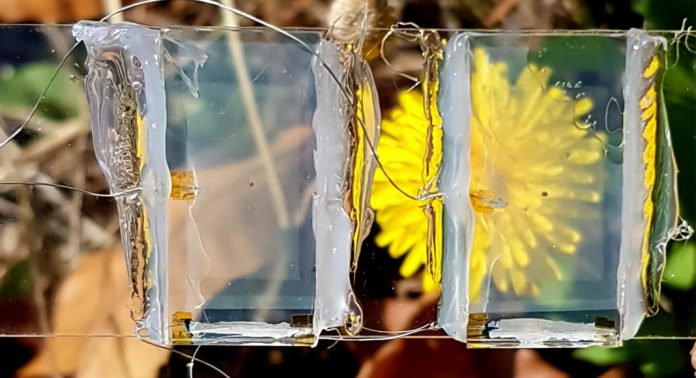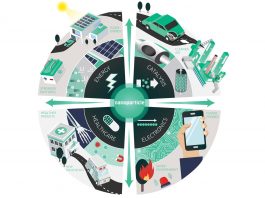A team of researchers, based in Korea, have developed a transparent solar cell using titanium dioxide and nickel oxide.
In recent decades, solar cells have become cheaper, more efficient, and environment friendly. However, current solar cells tend to be opaque, which prevents their wider use and integration into everyday materials, constrained to being lined up on roofs and in remote solar farms. The development of a fully transparent solar cell could result in the wider adoption of renewable energy inside people’s homes and in commercial buildings.
Joondong Kim from the Department of Electrical Engineering at Incheon National University, Korea, recently published a study in Journal of Power Sources, outlining how he and his colleagues developed a fully transparent solar cell. “The unique features of transparent photovoltaic cells could have various applications in human technology,” says Kim.
Solar cells are currently opaque due to their semiconductor layers, which are responsible for capturing light and translating it into an electrical current. In this study, Kim and his colleagues sought after a transparent semiconductor material and examined two potential materials, identified by previous researchers.
The first is titanium dioxide (TiO2), a well-known semiconductor already widely used to make solar cells. TiO2 is also an environment-friendly and non-toxic material. This material absorbs UV light while letting through most of the visible light range. The second material investigated to make this junction was nickel oxide (NiO), another semiconductor known to have high optical transparency. As nickel is one of the most abundant elements on Earth, and its oxide can easily be manufactured at low industrial temperatures, NiO is also a great material to make eco-friendly cells.
Developing a successful transparent solar cell
The solar cell prepared by the researchers was composed of a glass substrate and a metal oxide electrode, on top of which they deposited thin layers of the semiconductors (TiO2 first, then NiO) and a final coating of silver nanowires, acting as the other electrode in the cell. They ran several tests to evaluate the device’s absorbance and transmittance of light, as well as its effectiveness as a solar cell.
With a power conversion efficiency of 2.1%, the cell’s performance was quite good, given that it targets only a small part of the light spectrum. The cell was also highly responsive and worked in low light conditions. Furthermore, more than 57% of visible light was transmitted through the cell’s layers, giving the cell this transparent aspect.
In the final part of their experiment, the researchers demonstrated how their device could be used to power a small motor. “While this innovative solar cell is still very much in its infancy, our results strongly suggest that further improvement is possible for transparent photovoltaics by optimising the cell’s optical and electrical properties,” suggests Kim.









